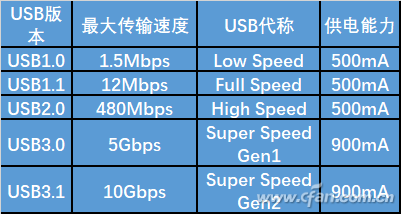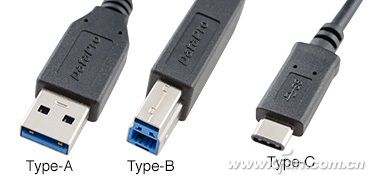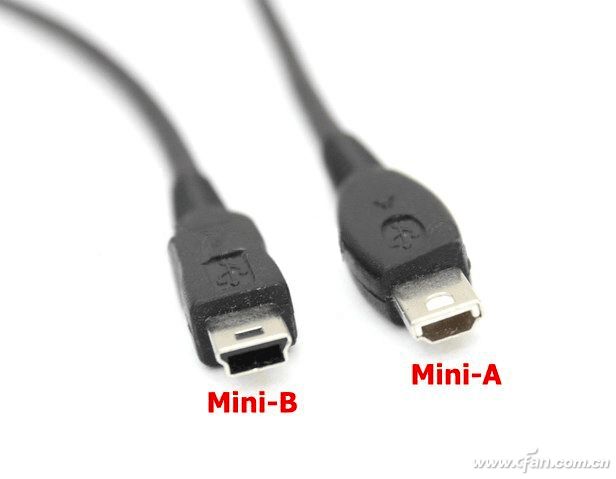Yesterday, someone asked Xiao Bian to lose his own hard drive box line, but the interface did not know, let Xiao Bian help identify one to buy one. It was discovered that the small partner's hard disk box turned out to be the Mini-USB A interface of the antiquity era. It was precisely that Xiao Bian made use of this opportunity to popularize USB things for everyone because: Really! in! too! Chaos! It! However, the USB interface is not simply a doll one more than one.

Three generations of USB standards do not remember
At the time of the launch of USB, nobody thought that this cheap connection method with only a few cores could one day lead the way. Since USB 1.0, USB has been developed for three generations. Wait, how is it 3 generations? Yes, although there is a total of USB 1.0, USB 1.1, 2.0, 3.0, and 3.1, only three generations have been calculated from this generation, USB 1.1 is an improvement of USB 1.0, and USB 3.1 is an improved USB 3.0, not a replacement technology standard.

In fact, the introduction of each generation of USB technology standards is a solution to meet the surge in data exchange now and in the coming years. Why can USB be iterative and popular? In fact, the reason is very simple - backward compatibility, USB 3.1 can be compatible with even USB 1.0 device, this wide compatibility can minimize the popularity. The more important thing is that the USB bus standard is a free open technology alliance. In fact, there are still many challengers around USB, such as IEEE 1394, and lightning interfaces that are still working hard today. However, they are far from the success of USB.
The most important watershed of USB seems to be USB 3.0 in Xiaobian's view, because its functions and functions have undergone essential changes. While the performance is continuously improving, the power supply capability is also enhanced. This means that since USB 3.0, it will be more than just one. The data transmission standard, it can expand more connection applications. For example, the bandwidth performance of USB was insufficient, so at most it was a USB sound card. The latest USB 3.1 has been used on the video card. Thorn does not stimulate?

Interface appearance another piece of heaven and earth
Many people now say BiType-C, and even some vendors vaguely publicize it, causing many partners to mistake Type-C=USB 3.1. This is actually not the case at all. Let Xiaobian give you a few pictures to understand.
Type-A: Standard USB interface style, USB 1.1 to USB 3.1 all follow this design, such as USB keyboard and mouse, various wireless adapters, all adopt this USB interface style;
Type-B: The standard interface used by large-scale USB devices is CCTV. USB 1.0 to USB 3.1 all follow this design. Currently, they are mainly used in 3.5-inch HDD enclosures/bases.
Type-C: simply refers to the USB miniaturized interface style, regardless of the positive and negative, the latest interface of mobile devices, has a great trend to replace Micro USB, is currently the main interface of the USB 2.0, USB 3.0/3.1 interface products;

Mini-USB A: Some old 2.5-inch mobile hard disk cartridges are used, but they have basically been eliminated.
Mini-USB B: The mobile phone and 2.5-inch HDD box around 2005 mainly use this interface style, and has now been eliminated;

Micro USB 2.0: The mainstream mobile devices use the micro USB interface style, which replaces the Mini USB interface, but this interface is limited in size, and the only USB 2.0 interface standard products;
Micro USB 3.0: The relatively rare Micro USB B interface is currently used mainly on USB 3.0/3.1 devices (mostly mobile hard disk cartridges). The main reason for this interface is to make up for the dilemma that the Micro USB interface style cannot apply USB 3.0.

Did you see that the interface style is only relative to the USB bus standard's generation difference, and there is no absolute relationship. This is a USB appearance style. Of course, this does not rule out that Micro USB 2.0 is not compatible with USB 3.0 due to design issues and redesign a Style situation. But overall, everyone is a relative relationship. There is no interface style product that is necessarily a USB bus standard.
